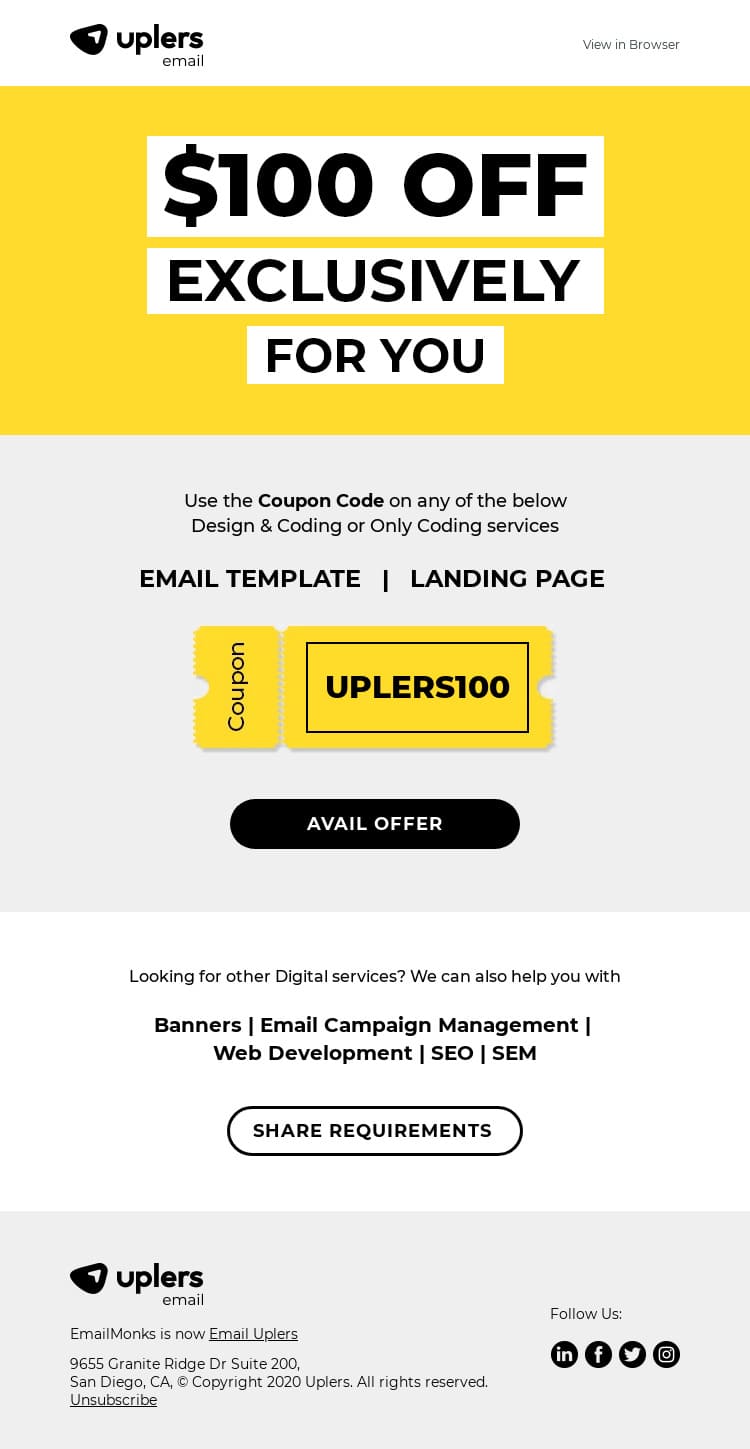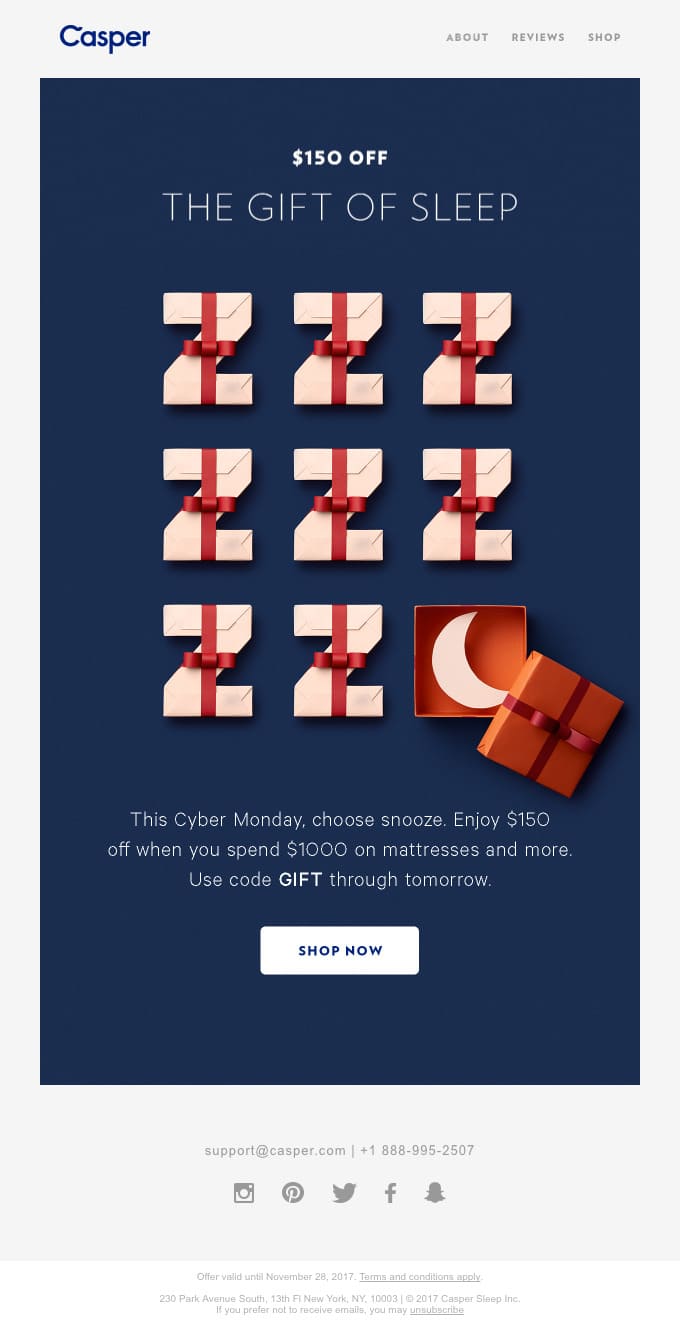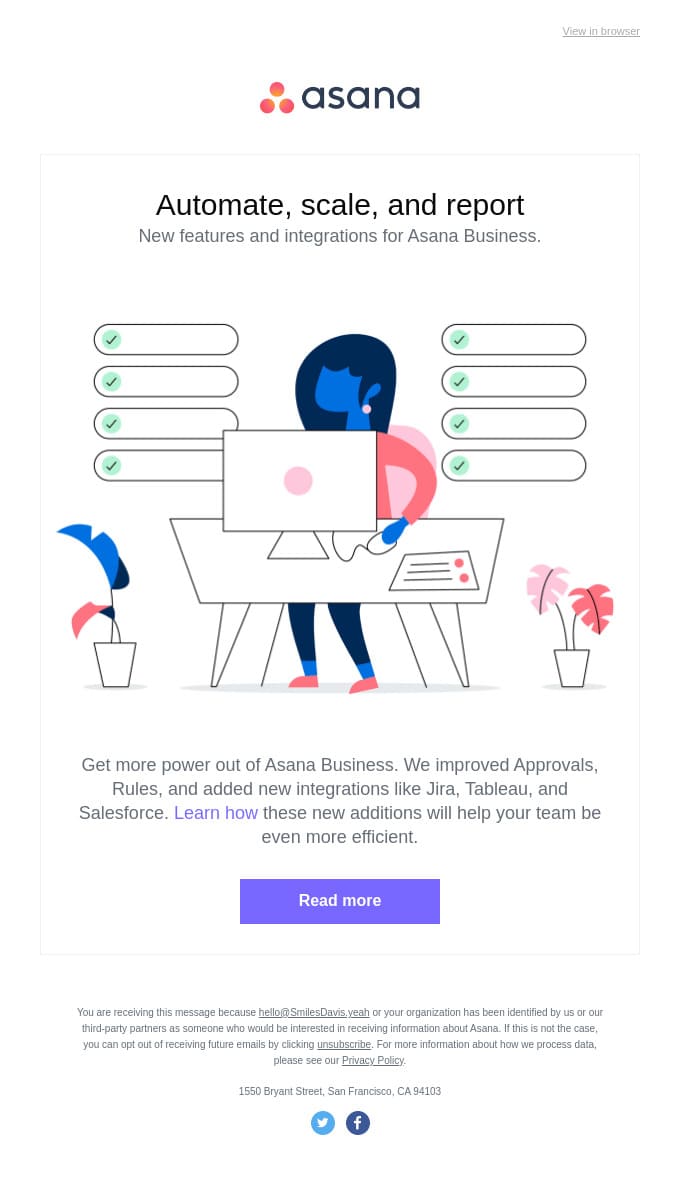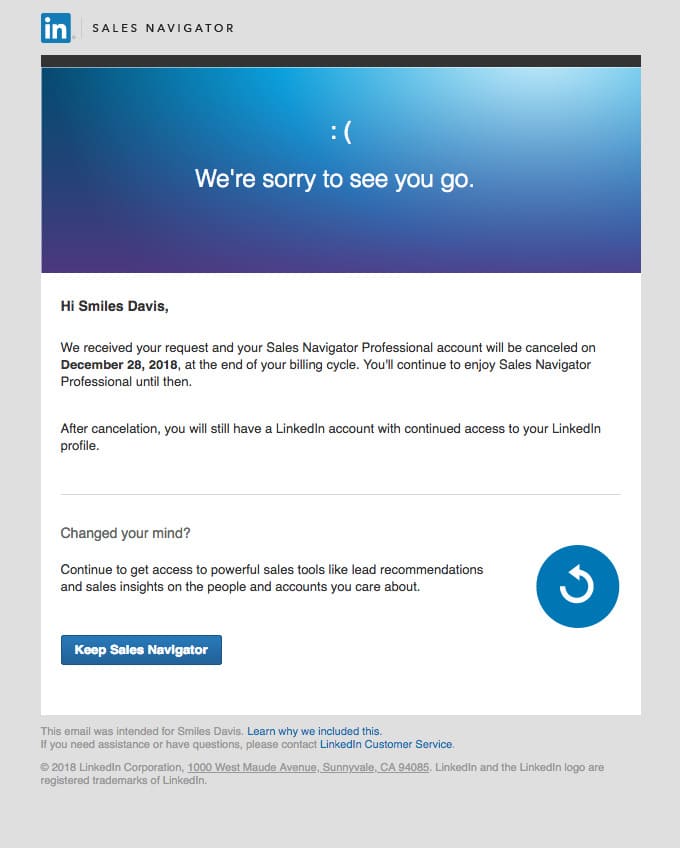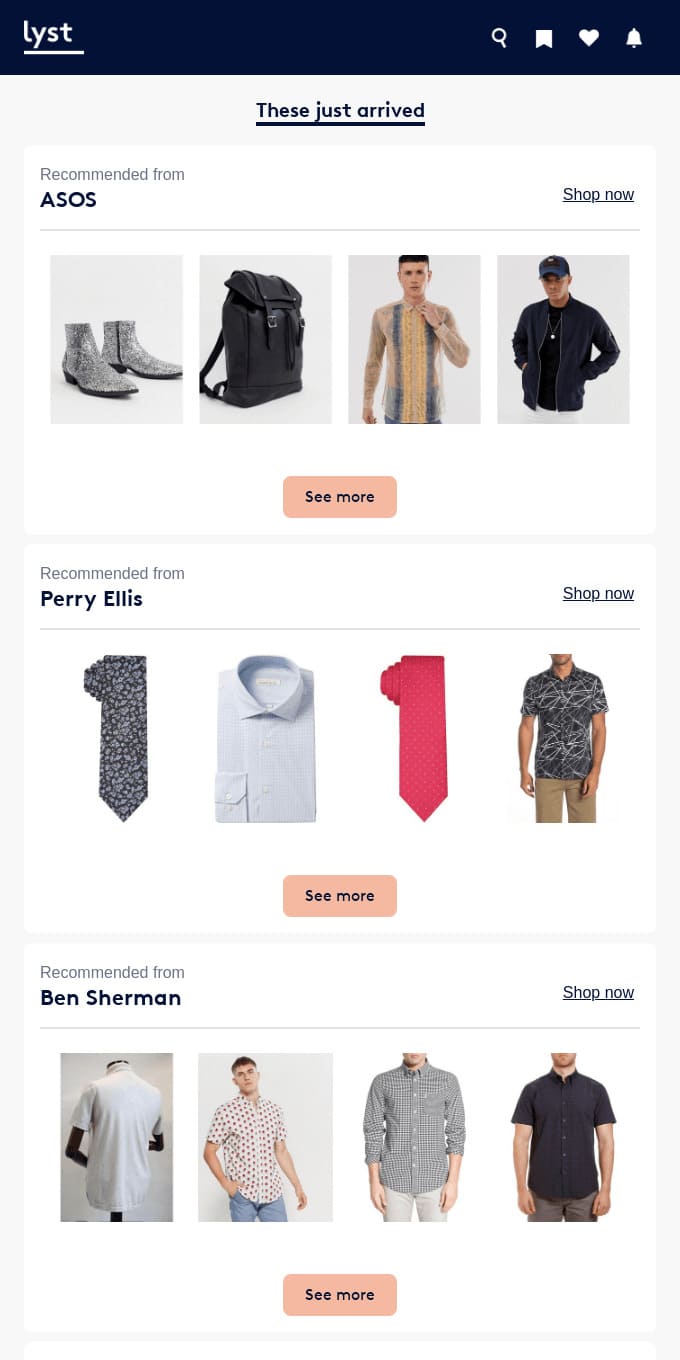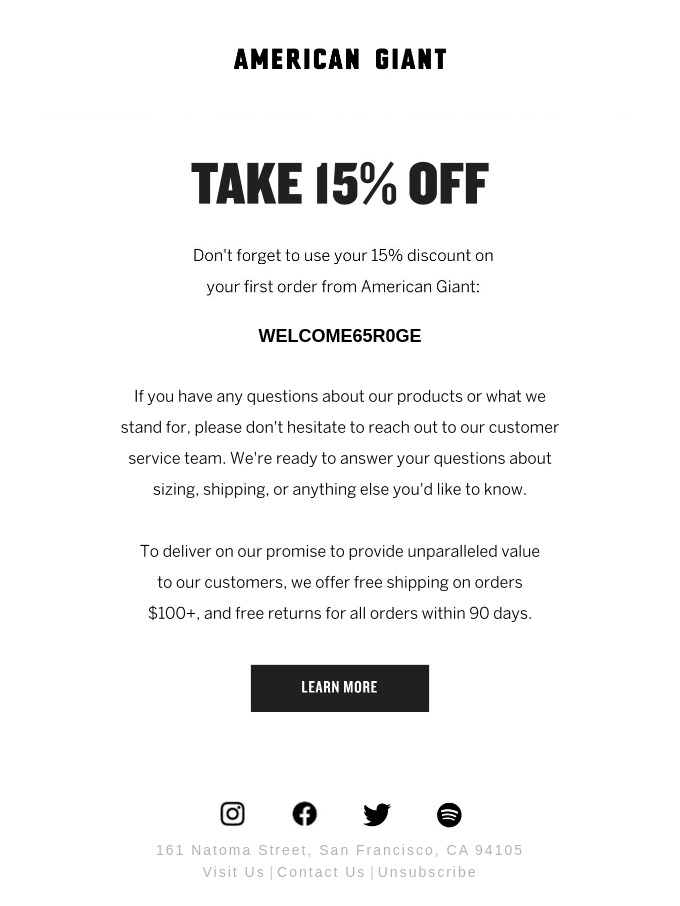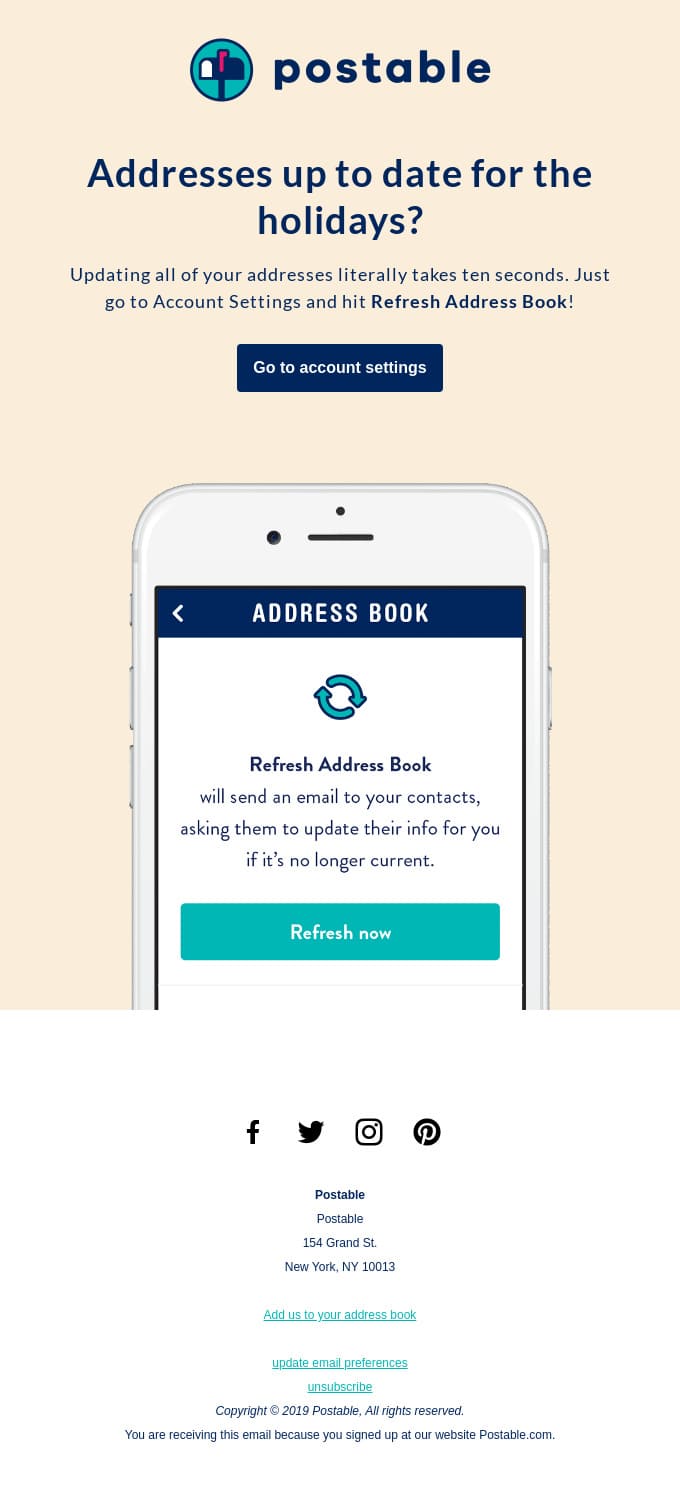What is an Email Marketing Strategy?
Email is one of the oldest and most widely-used forms of digital communication. With over 4 billion regular email users, ignoring this marketing channel disservices your brand. An email marketing strategy refers to the procedures through which your brand identifies and works to achieve desired goals with email advertising.
One great advantage of email marketing is that you can do it for a relatively lower cost compared to other channels like social media, paid search, websites, affiliate marketing, etc.
Email gives your business a direct line of communication with prospects and customers, so it’s necessary to employ viable strategies to lure their attention. Remember that people get dozens of emails daily, and it’s only the ones that stand out that they’ll respond to. Yet, in a sea of emails, how can you make yours unique to attract the recipient’s attention? You’ve come to the right place to learn.
Planning an Email Marketing Strategy
An effective email marketing strategy doesn't involve throwing many things at the wall to see what sticks. Instead, it's a detailed plan for your campaign – the methods, objectives, goals, and how you plan to achieve them. The steps to planning an effective marketing strategy include:
1. Identify the context for your email campaign
You should consider the internal and external contexts of your business and how they affect your email campaigns. One method for doing this is called the SWOT analysis. It focuses on Strengths, Weaknesses, Opportunities, and Threats.
- Strengths: What gives your business a competitive edge in driving sales? For instance, if you're selling clothing, is it cheaper prices or higher quality that's the core attraction to your business?
- Weaknesses: What areas is your business weak at? These are the areas you should avoid in your email campaigns. For instance, your clothing store may not have high-quality photos and model shots like competitors.
- Opportunities: What are the situations your campaign can benefit from? It may be a new product launch, a loyal customer base, or recent news coverage that boosted the visibility of your brand.
- Threats: What could be detrimental to your campaign? It could be a competitor with more advertising funds at their disposal, limited resources for your business, etc.
2. Define your objectives
With your campaign's context drawn out, it's time to set clear goals and objectives for it. What are the goals of your campaign? Is it to get more customers? To increase your number of email subscribers? To boost your brand visibility?
Goals are what you aim to achieve with your campaign and the objectives are the milestones contributing to your goals. Goals can be broad but objectives should be precise. For instance, your goal can be to increase sales, but the objective should define the exact percentage by which you want to increase sales.
3. Prepare to execute your campaign
With the context of your campaign in mind and clear goals, it’s time to start executing your ideas, and this involves several steps. You must first get to know your audience and what'll be relevant to send to them. For instance, as a clothing store, your customers will likely want to hear about new arrivals and discounts on items.
An exemplary email campaign.
You should also employ automation where possible in your email campaigns. This frees up time for your marketers to focus on areas that can't be automated.
How to Set Email Marketing Goals
1. Identify your audience and the purpose of your marketing campaign
The first thing to consider is the encompassing goals of your email marketing strategy. Ask questions like:
- What’s the primary goal of your campaign? To increase revenue? To build up a subscriber list you can market to in the future? Etc.
- How does the campaign align with your brand’s objectives?
- What do you want to achieve for your brand with the campaign?
Every enterprise’s primary goal is to generate revenue, so all your goals will obviously tie back to that. Working from this context, you can identify how exactly to increase sales at your organization.
An email campaign offering a discount aimed at boosting sales.
It's also necessary to identify the target audience for your email campaign. Ask questions like:
- What demographics are you targeting?
- What segment of your existing subscribers are you aiming at?
- What type of prospects are you targeting? Consumers or big businesses?
- Where will the recipients read your emails most, mobile or desktop?
A good email campaign (like this one) should be easy to read on both desktops and smartphone displays.
2. Choose metrics to measure your campaign’s performance
There are specific metrics that help you objectively measure the success of your campaign. If these metrics aren't good enough, look for ways to improve them. Examples include:
- Open Rate: what percentage of recipients open your email?
- List Growth Rate: What percentage does your subscriber list grow over a specified period?
- Click-Through Rate: How many subscribers clicked on a link within your email?
- Conversion Rate: How many subscribers clicked on a link and completed the suggested action?
These metrics make it easy to know where your campaign is improving or lacking.
3. Track the progress towards your goals
You have successfully set your goals and determined the metrics to measure them, but it doesn’t end there. You must continually measure if you’re achieving your goals and work to improve your campaign if you’re not. Email service providers (e.g., UniOne) provide tools to help you track performance metrics, so it should be easy.
Email Metrics: How We Measure Success
It’s important to dive deeper into the metrics marketers use to measure the success of their email marketing strategy. Many metrics and insights are involved, including sales reports from your business and the reports provided directly by your email provider. Here’s a list of the important metrics and how to calculate them:
Open Rate
How many recipients actually open your email? You can calculate the exact percentage by including a tracking image inside each email. When any recipients open the email, it reflects on your tracking image.
However, this metric isn’t always reliable because some email providers don't download images by default, so they may not open your tracking image. Similarly, some email clients only show text without images or people with slow connections might not load your images.
Apple’s Mail Privacy Protection feature for iPhone, iPad, and Mac PC users has also made it difficult to accurately track open rates. Hence, you should consider other metrics alongside this one to measure the success of your campaigns.
Click-Through Rate
How many recipients click on a link that you inserted in your email? Most email service providers redirect links through their own tracking services to measure this metric and report to users.
Use a visible call-to-action button like this one accompanied by a precise message to increase your click-through rates.
Conversion Rate
It’s one thing for a recipient to click a link that redirects them to your website. But, how many recipients followed the suggested action for the link, e.g., buying an item or subscribing to an email list? The percentage of recipients that do this is known as the conversion rate. You can use analytics software like Google Analytics or Mixpanel to measure this metric.
A good conversion rate hovers between 2% and 5%. Anything below 2% means you should tweak your emails to produce better results.
Forwards
What percentage of recipients forward your emails to another user? Anyone who forwards your email to another person likely enjoyed your email so much that they didn't want their friend to miss out on the fun. Some email service providers measure this metric and report it to users.
Unsubscribes
How many recipients hit that unsubscribe button to remove themselves from your email list? Unsubscribers are inevitable, so don’t fret. If the rate is under 2%, that’s acceptable. Anything above that means you may be too pushy in your emails and annoy recipients.
You can send a creative email to every subscriber who chooses to unsubscribe and sneak in a survey to know why they’re unsubscribing or ask them to reconsider.
A fitting email service provider should provide a single dashboard to help you track all these important metrics. The good thing is that UniOne offers such a dashboard to businesses from which they can monitor all their email campaign metrics and identify where to improve.
Content Strategy
It’s time to think of how you’ll send your emails. There are certain tips to consider to implement a good email marketing strategy which include:
1. Use Personalization
Personalization involves using data you have about your subscribers to send a more targeted email. The data could be the subscriber’s name, location, age, last action performed, last item purchased, etc. It should be data that you collected with consent, and it’s up to you to choose the best type of personalization to employ. You can do some A/B testing to see what delivers the best marketing results.
A good example of a personalized email is checking your subscribers’ product browsing history and sending them recommended products based on the type of products they check most.
2. Keep your Subject Lines Short and Precise
The subject line is what the email recipient sees first, meaning they're very important. Personalized subject lines like "Hey, [subscriber's name]” tend to get more opens than normal emails, but that’s not the only thing. Shorter subject lines that the customer can read at a glance tend to have a higher open rate than longer ones. Subject lines indicating a sense of urgency, e.g., “Hurry up!” or “Get it before it’s late!”, also tend to have higher open rates.
3. Include Discount Codes and Other Freebies
No one likes to pass up on a good deal, so you can include freebies like discount codes and vouchers to tempt recipients to respond to your marketing campaigns. This strategy goes a long way in improving your conversion rate, so it’s smart to adopt it if you notice your conversion rate is below the recommended 2%.
You can see a fitting example of this strategy below. American Giant, a clothing retailer, is offering a 15% discount to subscribers to entice them to buy items. This discount can make a prospect that doesn’t want to purchase reconsider their decision.
4. Send Mobile-Friendly Emails
Many subscribers will read your emails on a mobile phone, so endeavor to send messages that fit well within a smartphone's smaller display. Tips to do this include displaying small images, using bigger font sizes, and adding a call-to-action button that's visible and easy to tap.
5. Consider the Timing
The time at which you send emails affects the success rate of your campaigns. There are specific times when different types of customers are more likely to respond to your emails. For instance, if you're advertising a leisure activity, it'll be better to send the email on a weekend when recipients will be more eager to take advantage of it instead of on a workday.
Q&A
How can I make customers read my email?
Use personalization to draw the recipient’s attention. Also, use a short yet catchy subject line. You can also include freebies like discounts on items to keep the customer engaged.
How should I write the content of an email?
Go straight to the point. Customers have limited time, so don’t waste it. Make it clear what value the email is providing and include a call-to-action button to direct the recipient toward the next steps.
How often should I send emails?
You can send emails up to four times a month, or once a week. Once a month helps register your brand in the customer's mind but may not be sufficient. Twice or thrice a month helps you connect with the customer regularly, but we think four times a month is the most consistent pace.
How do I design an eye-catching email?
Use high-quality images, visible call-to-action buttons, and animated gifs to attract attention. Use consistent font types, colors, and sizes to make the email easy to read. Use a responsive template that looks good on all devices.
How do I measure my performance metrics?
Your email service provider should offer a dashboard that provides you with a breakdown of important metrics like open rates, click-through rates, and the number of forwards. UniOne offers an intuitive dashboard where you can monitor these metrics. You can also use external analytics software to measure conversion rates on your website.
How do I prevent people from unsubscribing?
Use relevant content. Your prospects will get tired of messages not related to your core business or service and will eventually unsubscribe or even place your email into the spam folder, so always stay on topic.
Besides, don't send information about sales only, as that may be too pushy. You can occasionally send stories and testimonials to help customers connect with your business.
How long should my emails be?
The ideal length of a marketing email is between 50 and 125 words. This length is short enough to convey your message quickly and enact a response from the recipient.
How should I grow my email list?
Make it easy to sign up on your website. You can include a simple form on your pages that asks for a name and email. Besides, sending valuable content can make recipients refer their friends and family to add to your email list.
Conclusion
Email marketing is difficult but not overly so. With good planning and an effective email service provider, you can increase the success rate of your email campaigns and earn a higher return on investment. UniOne is a solid example of an effective email service provider offering tools to help you send transactional emails with high deliverability rates and providing an intuitive dashboard to monitor the performance of your email campaigns.
We’ve broken down what an email marketing strategy is and the tips to help you formulate an effective one. Follow these tips, and you’ll likely see a high success rate on your email campaigns measured by critical metrics like conversion, open rates, and click-through rates.
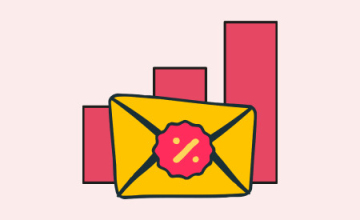

 15 november 2022, 09:30
15 november 2022, 09:30
 380
380
